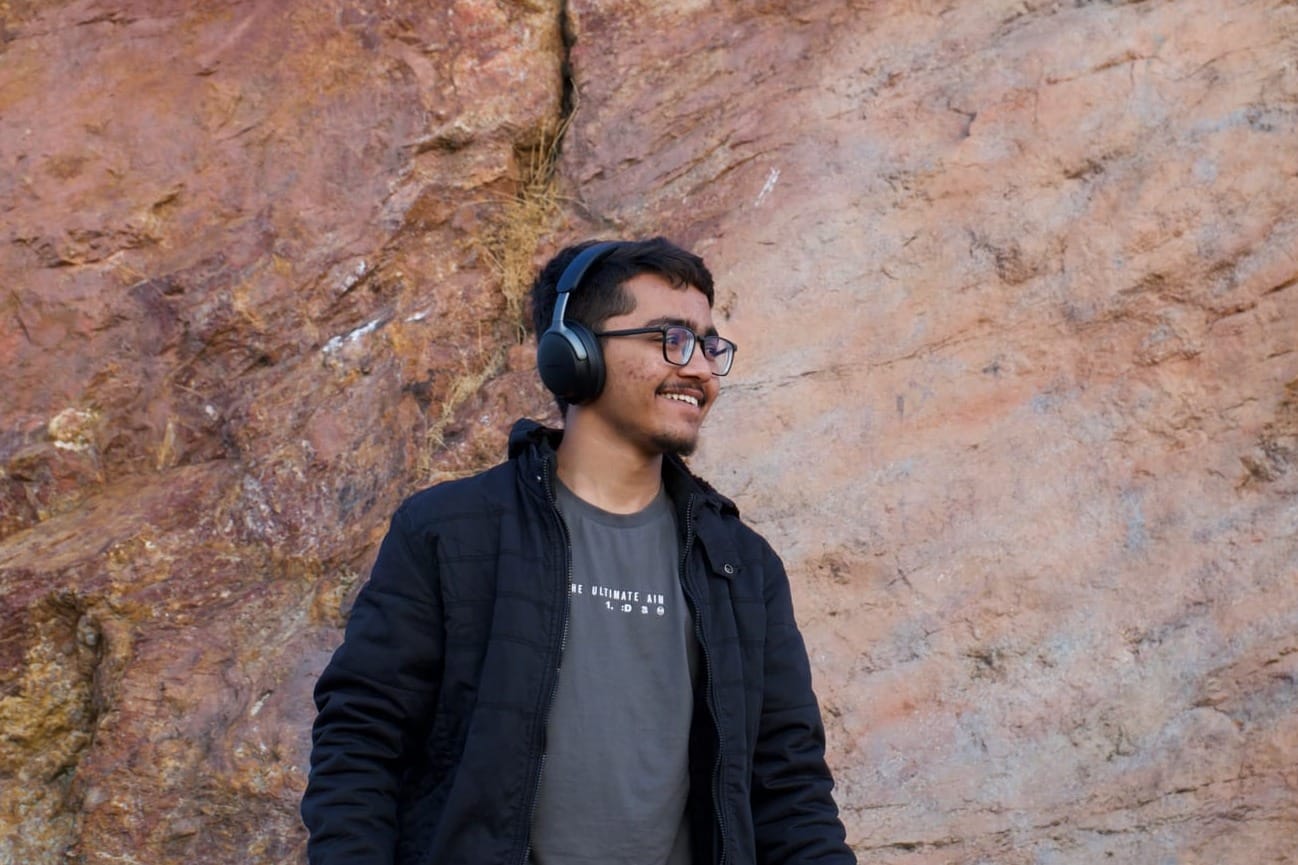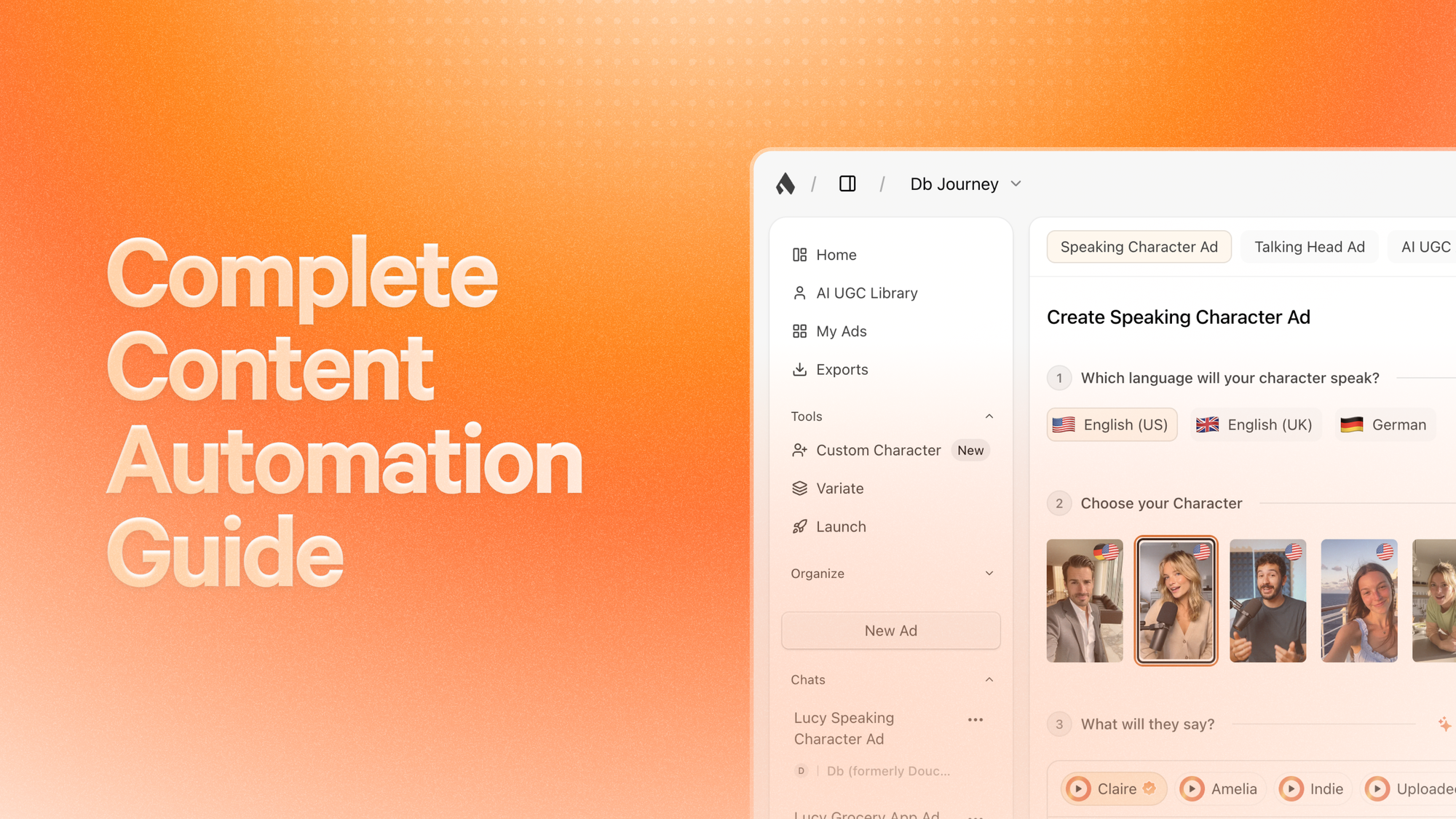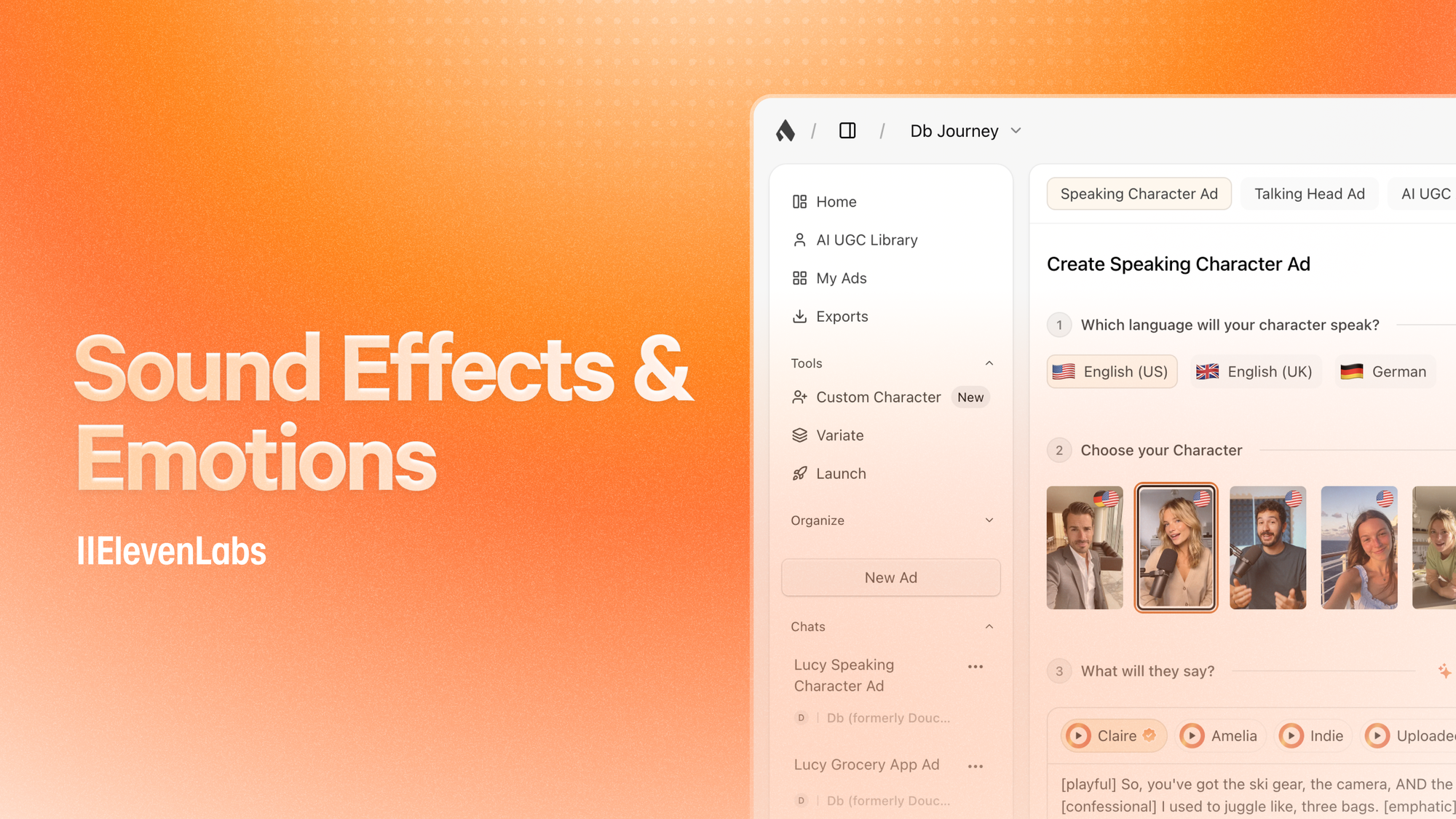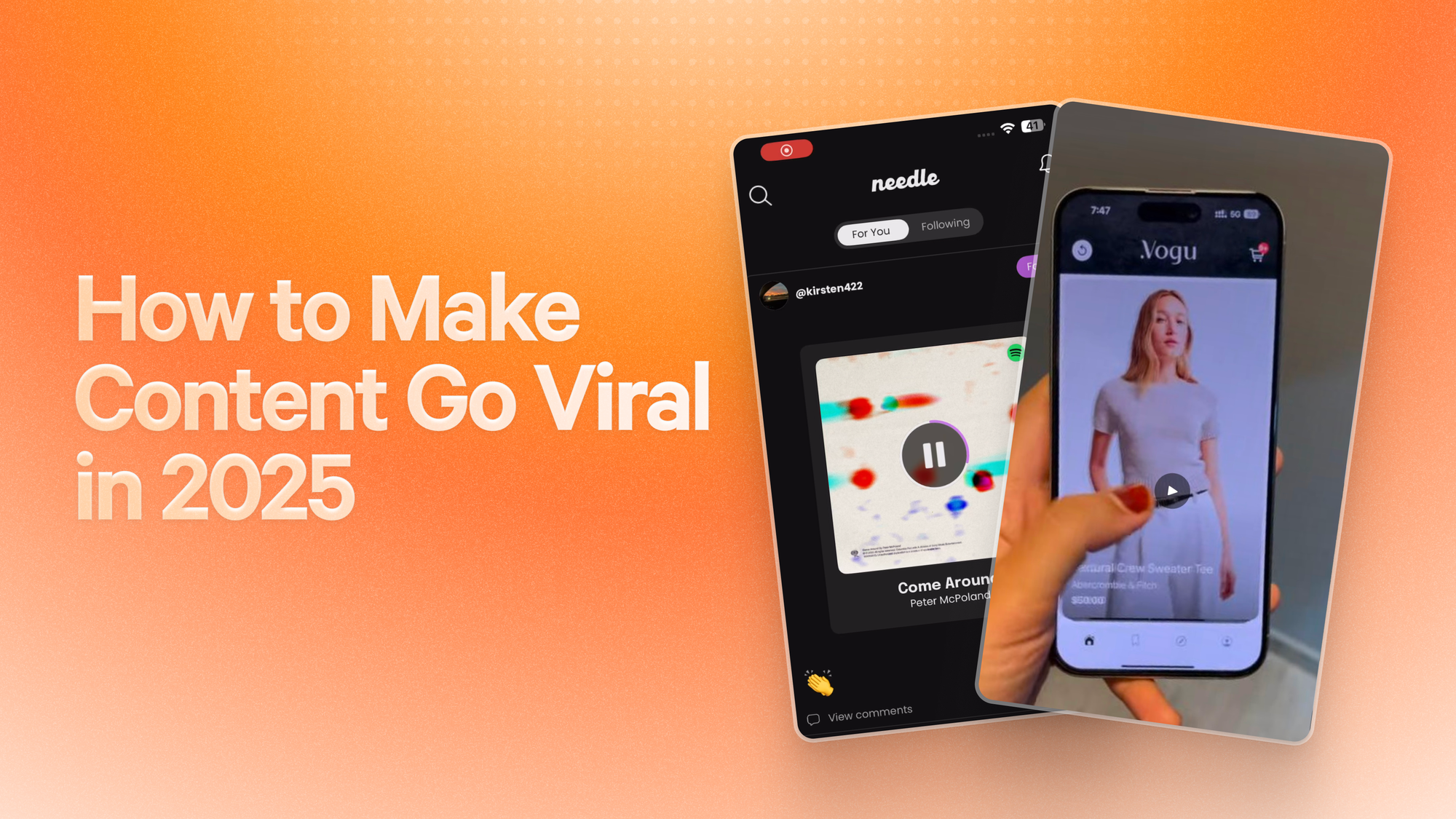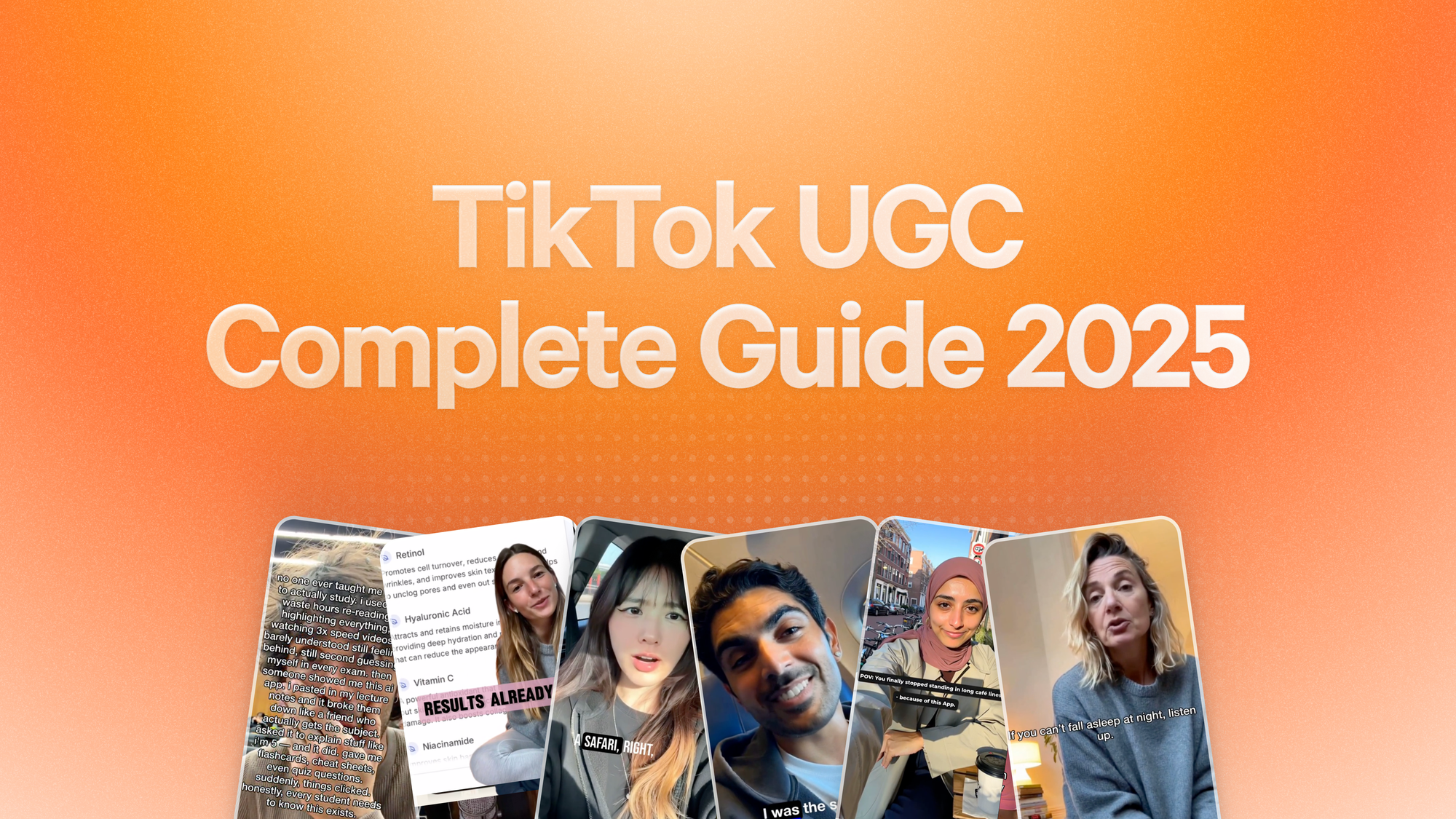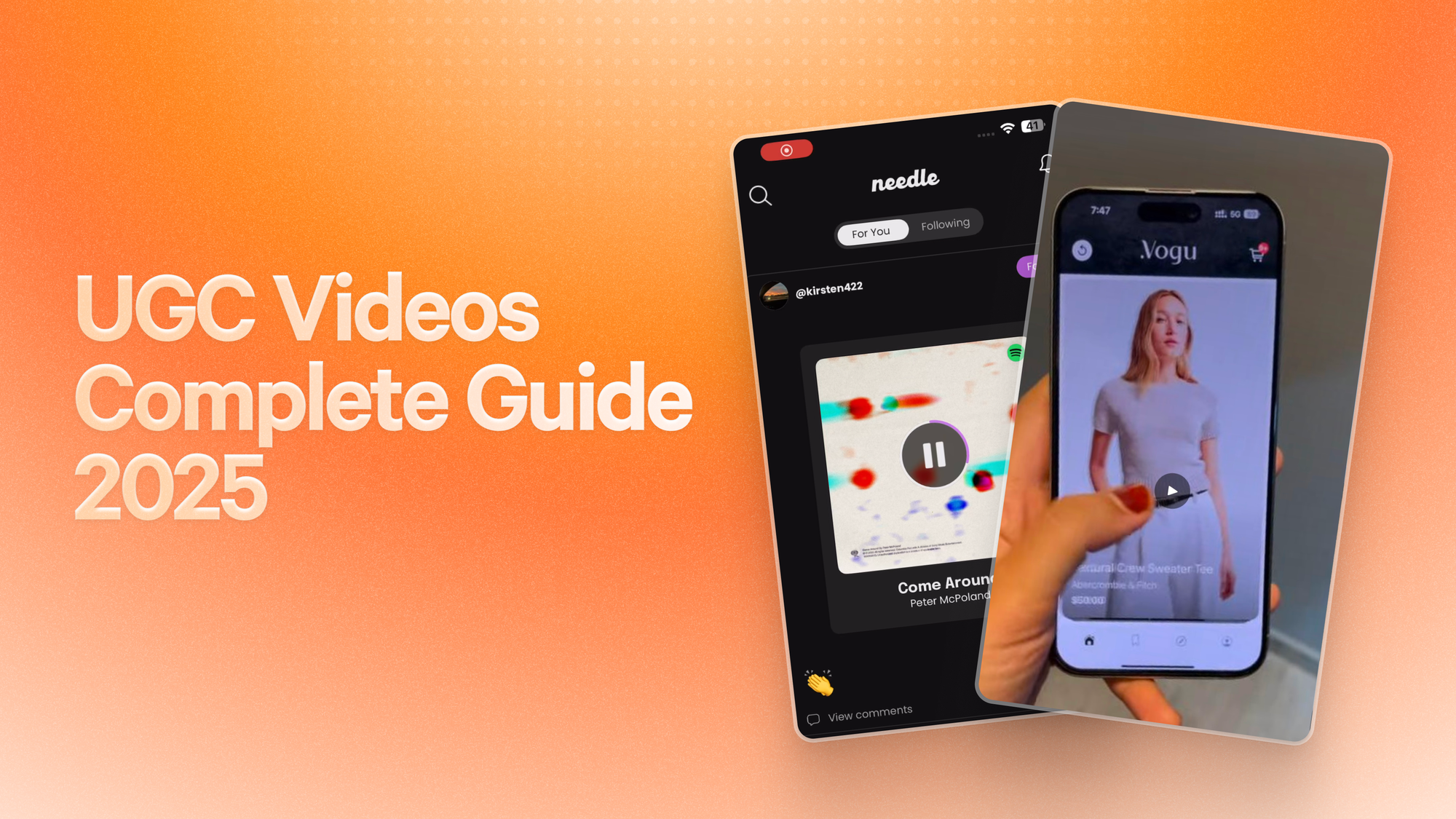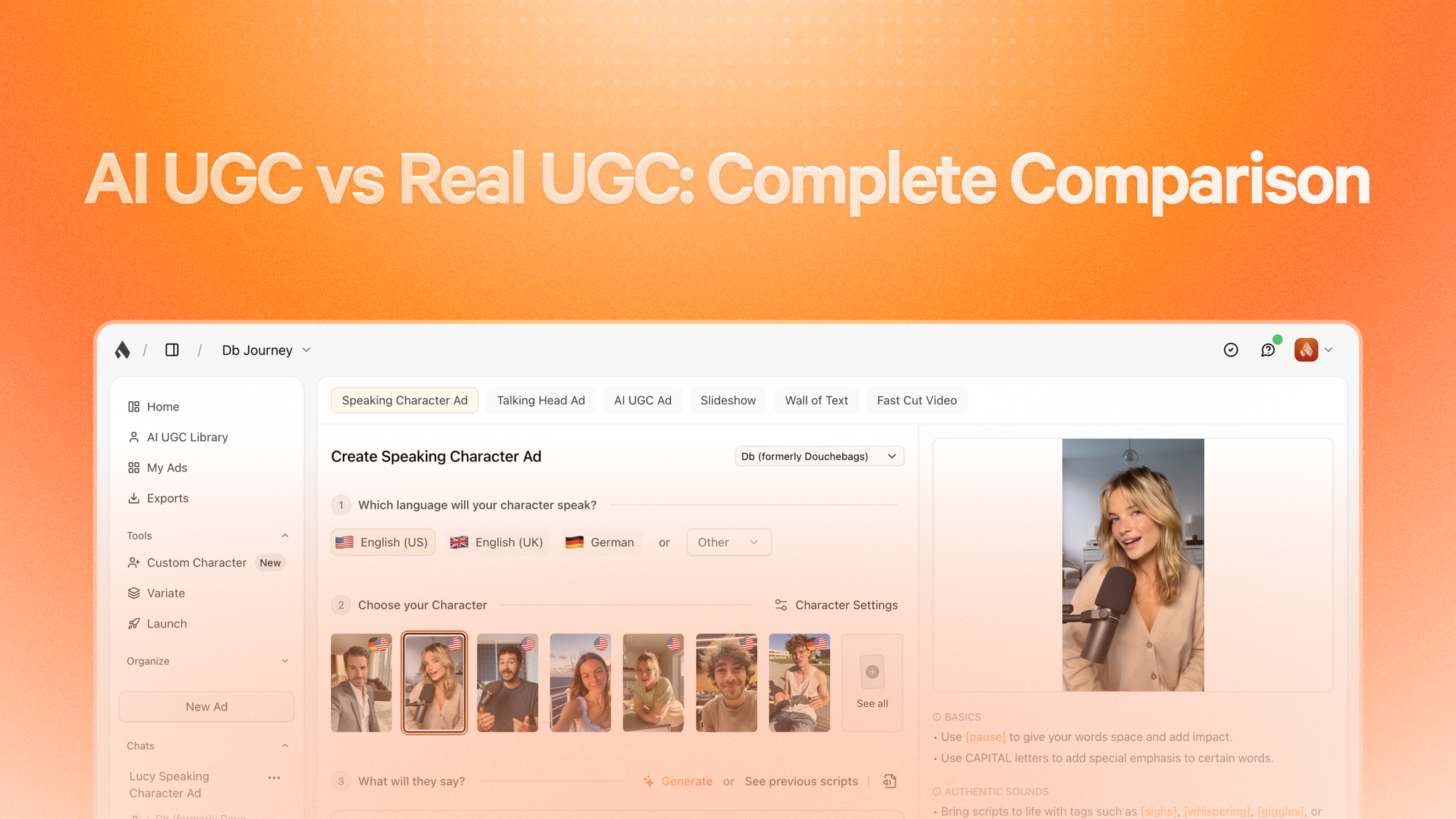Content Automation for App Marketing: A Founder's Guide to Scaling Growth
The math behind successful app marketing reveals a brutal truth: 93% of marketers report video delivers excellent ROI, yet most app founders spend 80% of their time creating content manually instead of focusing on strategy and optimization.
Smart founders have cracked this code. They're using strategic automation to scale what works while eliminating the time-drain of repetitive content creation tasks. The result? 87% report increased lead generation while cutting content production time in half.
The Reality of App Marketing Content Automation
Most "marketing automation" promises everything and delivers generic templates. Real content automation for app marketing works differently - it amplifies human creativity rather than replacing it entirely.
What Actually Works in 2025
The most successful app founders use a hybrid approach: human strategy with smart automation for execution. This means identifying what resonates with your audience first, then using technology to scale those winning patterns efficiently.
The Strategic Automation Framework
Instead of automating everything poorly, successful founders automate specific high-impact tasks while maintaining creative control over strategy and messaging. This approach delivers 3x better results than fully automated systems while requiring 70% less time than pure manual creation.
Why Most Automation Tools Fail
Generic automation tools create generic content. App marketing requires platform-specific optimization, audience understanding, and creative testing that most automation platforms can't deliver. The tools that work focus on scaling proven winners rather than generating random content.
Manual vs Smart Automation Reality
Manual content creation allows complete creative control but limits testing volume to 2-3 pieces per week. Smart automation maintains creative quality while enabling 20+ test variations weekly. The sweet spot combines human insight with automated execution.
Current Technology Limitations
Full marketing automation remains challenging because effective app marketing requires nuanced understanding of user psychology, platform algorithms, and competitive positioning. However, specific automation tasks - particularly video content creation and distribution scheduling - have reached maturity levels that deliver reliable results.
The Economics of Smart Automation
Traditional content creation costs app founders 15-25 hours weekly plus $300-800 per video for quality results. Smart automation reduces time investment to 3-5 hours weekly while cutting per-video costs to under $5, enabling massive scale testing that identifies winning approaches faster.
Video Content Automation: The Highest ROI Channel
Video content automation delivers exceptional returns because video naturally performs better across all marketing channels while being the most time-intensive to create manually.
Platform Performance Data
Videos on social media generate 1,200% more shares than text and images combined. For app marketing specifically, video content achieves 4x higher click-through rates and converts 161% better than static alternatives. This performance advantage multiplies when videos are optimized for each platform's specific algorithm preferences.
Why Video Automation Works Better Than Other Content Types
Video automation succeeds because the format itself is highly templatable. Successful app marketing videos follow predictable patterns: problem introduction, solution demonstration, social proof, and call-to-action. These elements can be systematically arranged while maintaining authentic feel and platform-specific optimization.
TikTok Video Automation Strategy
TikTok's algorithm rewards content that matches native user behaviors and trending formats. Automated video creation that incorporates trending audio, follows platform-specific pacing, and demonstrates apps authentically performs comparably to manual creation while enabling rapid testing of multiple approaches simultaneously.
Successful TikTok automation focuses on:
- Hook optimization within first 3 seconds to maximize completion rates
- Platform-native transitions and pacing that feel organic rather than promotional
- Trending audio integration that aligns naturally with app demonstration content
- Multiple format testing including fast-cut demonstrations, educational angles, and transformation stories
Instagram Reels and Feed Automation
Instagram rewards visually compelling content with clear value propositions. Automated Instagram content excels when it maintains consistent visual branding while adapting messaging for different audience segments and campaign objectives.
Effective Instagram automation includes:
- Slideshow creation with consistent design systems and compelling narrative flows
- Reels optimization for both sound-on and muted viewing experiences
- Stories automation that builds engagement through interactive elements and behind-the-scenes content
- Feed post automation that balances promotional content with value-driven educational posts
YouTube Shorts Automation Strategy
YouTube Shorts benefit from search optimization and educational content angles. Automated YouTube content performs best when optimized for discovery through search rather than trending algorithms.
YouTube automation advantages:
- Educational content creation that teaches while demonstrating app functionality
- Search-optimized titles and descriptions that capture long-term discovery traffic
- Consistent posting schedules that build subscriber engagement over time
- Tutorial-style content that provides lasting value beyond immediate promotional goals
Smart Template Automation That Actually Works
The difference between failed automation and successful scaling comes down to using the right technology. Modern AI platforms enable sophisticated video automation that maintains authentic feel while scaling production volume dramatically.
This approach works because it combines proven video structures with AI-powered execution. Founders who've switched to AI-powered automation report spending 3 hours weekly on strategy versus the previous 20+ hours on manual creation. Their secret? They found tools that handle the production heavy-lifting while they focus on what actually matters - understanding their audience and optimizing performance.
See how founders are automating 20+ video variations weekly - the technology has evolved far beyond basic templates to create content that viewers can't distinguish from human-created videos.
ROI Metrics for Video Automation
Apps using video automation report 87% increase in lead generation compared to manual content creation approaches. Additionally, automated video testing enables identification of winning creative approaches 3x faster than traditional methods, accelerating overall campaign optimization and improving advertising ROI significantly.
Strategic Automation Framework for App Founders
Successful content automation follows a structured approach that builds on manual testing insights rather than replacing human creativity entirely.
Phase 1: Manual Testing and Pattern Identification
Before automating anything, successful founders manually create 10-15 pieces of content across different platforms to identify what resonates with their specific audience. This testing phase reveals platform preferences, messaging angles, and creative approaches that drive actual app downloads rather than just engagement.
Key activities in Phase 1:
- Create diverse content formats manually to test audience response
- Track performance metrics beyond vanity metrics to identify genuine conversion drivers
- Document successful patterns including hooks, demonstrations, and calls-to-action that drive results
- Analyze competitor performance to identify market gaps and differentiation opportunities
- Build initial audience segments based on engagement and conversion behavior
Phase 2: Smart Template Automation
Once successful patterns are identified, smart automation scales those winning approaches through templated systems that maintain quality while increasing volume dramatically.
Smart template automation works by:
- Converting successful manual content into reusable templates that maintain core elements while allowing variation
- Using AI platforms to generate multiple versions of proven approaches with different hooks, demonstrations, and optimization for specific platforms
- Maintaining brand consistency through systematic visual and messaging guidelines that ensure all automated content aligns with successful manual examples
- Enabling rapid testing of variations on proven themes to continuously optimize performance
This phase typically increases content production from 3-5 pieces weekly to 20-30 pieces while maintaining or improving quality and conversion rates.
The founders seeing the best results don't try to build complex automation systems from scratch. They leverage existing AI tools that have already solved the technical challenges. Superscale users, for instance, go from manual testing insights to 30+ automated variations in their first week - because the platform already understands what works across different app categories and platforms.
Phase 3: Distribution Automation
The final automation phase focuses on distribution optimization rather than content creation, ensuring that great content reaches the right audiences at optimal times across multiple platforms.
Distribution automation includes:
- Cross-platform posting schedules optimized for each platform's peak engagement times
- Audience targeting automation that delivers content to users most likely to convert based on historical data
- Performance monitoring systems that automatically identify winning content for increased promotion budget allocation
- A/B testing automation for different calls-to-action, posting times, and audience segments
Platform Scheduling and Optimization Strategy
Different platforms require different optimization approaches for maximum automation effectiveness. Successful founders use platform-specific automation strategies rather than one-size-fits-all approaches.
TikTok Automation Optimization
- Post timing based on audience activity patterns rather than general "best practice" recommendations
- Hashtag automation that incorporates trending tags while maintaining relevance to app functionality
- Comment engagement automation that responds to user questions and builds community around app content
- Cross-promotion automation that leverages viral content success on TikTok to drive traffic to other platforms
Instagram Automation Optimization
- Stories and feed coordination that maintains consistent messaging while avoiding audience fatigue
- Reels optimization for both Explore page discovery and follower feed distribution
- User-generated content incorporation that amplifies authentic user experiences with automated reposting systems
- Shopping integration automation for apps with e-commerce components or subscription models
Strategic Automation Success Metrics
Successful automation focuses on business metrics rather than vanity metrics. Key performance indicators include:
- App download attribution from automated content vs. manual content to ensure automation maintains conversion quality
- Time investment reduction while maintaining or improving overall campaign performance
- Cost per acquisition changes when automated content replaces manual content creation
- Long-term audience building through automated content that provides lasting value beyond immediate promotional goals
Mobile App Marketing Examples That Scale
Understanding how successful apps implement content automation provides practical frameworks for founders looking to scale their own marketing efforts.
Example 1: Fitness App Viral Content System
A fitness tracking app achieved 340% growth in organic downloads by automating transformation story content. Their system generates before/after style videos using user data (with permission) and AI-generated demonstrations of workout features.
Their automation framework:
- Template system for transformation stories that maintains privacy while showcasing results
- Automated social proof integration using aggregated user success metrics
- Platform-specific optimization that adapts content length and format for TikTok vs Instagram
- Performance tracking that identifies which transformation angles drive highest conversion rates
Results: 89% reduction in content creation time while increasing video production from 3 to 25 pieces weekly. Cost per install decreased 67% while user quality scores remained consistent.
Example 2: Productivity App Educational Content Automation
A task management app built an automated educational content system that teaches productivity concepts while demonstrating app functionality naturally.
Their approach includes:
- AI-generated tutorials that address common productivity challenges using app features as solutions
- Automated content series that build comprehensive education funnels from awareness to conversion
- Cross-platform adaptation that optimizes educational content for different platform algorithms and user expectations
- Performance optimization based on which educational angles drive trial signups and paid conversions
Results: Over 150% increase in trial-to-paid conversion rates, attributed to educational content that demonstrates value before asking for commitment. Content production scaled from 2 to 18 educational videos weekly.
Example 3: Gaming App Gameplay Automation
A mobile game automated gameplay demonstration videos using screen recording and AI editing to showcase different game modes and achievements.
Automation system components:
- Automated gameplay capture that records interesting moments and achievements across different user sessions
- Smart editing that creates engaging highlights reels optimized for different social media platforms
- Performance tracking that identifies which gameplay moments drive highest download conversion rates
- Community content integration that amplifies user-generated gameplay content through automated curation
Results: 245% increase in qualified installs (users who complete tutorial and play multiple sessions) while reducing content creation workload by 78%.
Measurable ROI Across Examples
These examples demonstrate consistent patterns in successful content automation: focus on scalable systems rather than individual viral hits, maintain quality through smart templates rather than generic automation, and optimize for business metrics rather than engagement vanity metrics.
Common success factors include:
- 60-80% reduction in time spent on content creation while maintaining or improving quality
- 150-300% increase in content volume enabling more aggressive testing and optimization
- Cost per acquisition improvements ranging from 45-70% due to increased testing volume and winner identification
- User quality maintenance or improvement due to better content optimization and audience targeting
Replication Framework
Founders can replicate these successes by focusing on systematic approaches rather than copying specific tactics. The key is identifying your app's unique value proposition, understanding your audience's content preferences, then building automation systems that scale what works while maintaining authenticity and platform optimization.
Frequently Asked Questions
How much does content automation cost compared to manual creation?
Content automation typically costs 80-90% less than manual creation while producing 5-10x more content volume. Manual video creation costs $200-800 per video plus 3-5 hours of founder time. Modern AI automation brings costs down to under $2 per video with 10-15 minutes of oversight time.
The real savings come from testing velocity. When you can test 50 creative variations for the price of one traditional video, you find winning approaches faster. That's why smart founders prioritize testing volume over production perfection.
What's the minimum time investment needed for content automation to work?
Successful content automation requires 3-5 hours weekly for strategy, performance monitoring, and optimization. This compares to 15-25 hours weekly for manual content creation at similar volume levels. The key is front-loading strategic work to build effective automation systems rather than trying to automate without clear performance data.
Can automated content really compete with human creators for authenticity?
Modern AI-generated content achieves authenticity levels where 70% of viewers cannot distinguish between AI and human-created videos in blind tests. The key is using smart template systems that incorporate proven human insights rather than generic AI generation. Quality comes from strategic human input combined with AI execution capabilities.
Which platforms work best for app marketing content automation?
TikTok and Instagram Reels offer the best performance for automated app marketing content due to algorithm preferences for engaging video content regardless of creation method. YouTube Shorts provides excellent long-term discovery benefits. LinkedIn works well for B2B apps using educational automation approaches.
How quickly can founders expect to see results from automated content strategies?
Initial automation setup takes 2-3 weeks to implement effectively. Performance improvements typically appear within 4-6 weeks as automated testing identifies winning approaches faster than manual methods. Full ROI optimization usually occurs within 8-12 weeks once systems are refined based on performance data.
What are the biggest risks of content automation for app marketing?
The primary risk is over-automation that removes human strategic oversight. Successful automation requires ongoing human optimization and performance monitoring. Other risks include platform algorithm changes that affect automated content performance and audience fatigue from overly templated content approaches.
Should founders automate all content or maintain some manual creation?
The most successful approach combines automated scaling of proven approaches with continued manual experimentation for new ideas and strategies. A typical ratio is 70-80% automated content based on proven templates and 20-30% manual testing of new approaches and creative concepts.
How does content automation affect app store optimization and user acquisition costs?
Effective content automation typically improves user acquisition costs by 40-70% through increased testing volume and winner identification. App store optimization benefits from increased app awareness and social proof generated by scaled content efforts. However, automation must focus on quality audience building rather than vanity metrics to deliver sustainable results.
Scale Your App Marketing Without the Burnout
Content automation isn't about replacing creativity - it's about amplifying what works while eliminating time-drain tasks that prevent founders from focusing on strategy and growth.
The apps winning in 2025 use systematic approaches to scale their marketing efforts. While competitors struggle with manual content creation bottlenecks, smart founders build automation systems that test more, learn faster, and scale winning approaches efficiently.
Your automation journey starts with understanding what works for your specific audience, then building systems to scale those insights. The founders who implement strategic automation now will dominate their categories while competitors wonder why their manual approaches aren't keeping pace.
Next steps:
- Test manually first - Create 10+ pieces of content to identify what resonates with your audience
- Document winning patterns - Identify hooks, formats, and calls-to-action that drive real conversions
- Implement smart automation - Scale proven approaches efficiently with AI-powered tools
- Optimize systematically - Monitor performance and refine automation based on actual results
The opportunity for content automation in app marketing has never been better. The technology works, the ROI is proven, and early adopters are already building sustainable competitive advantages.
Join thousands of app founders who've already automated their content creation. Superscale makes it simple - upload your app link, choose your video style, and watch as AI generates dozens of test variations based on proven patterns. Most founders see their first winning creative within 48 hours of starting.

